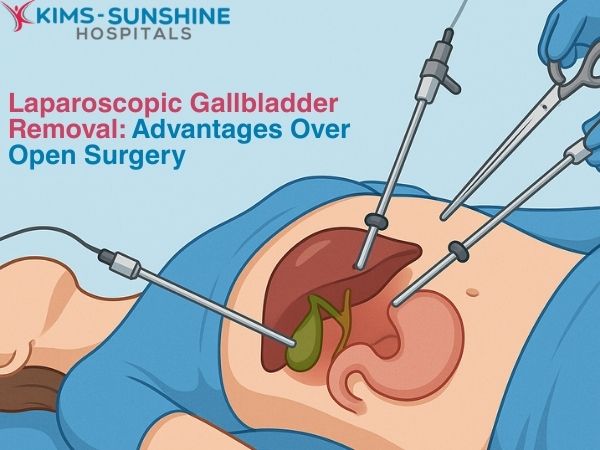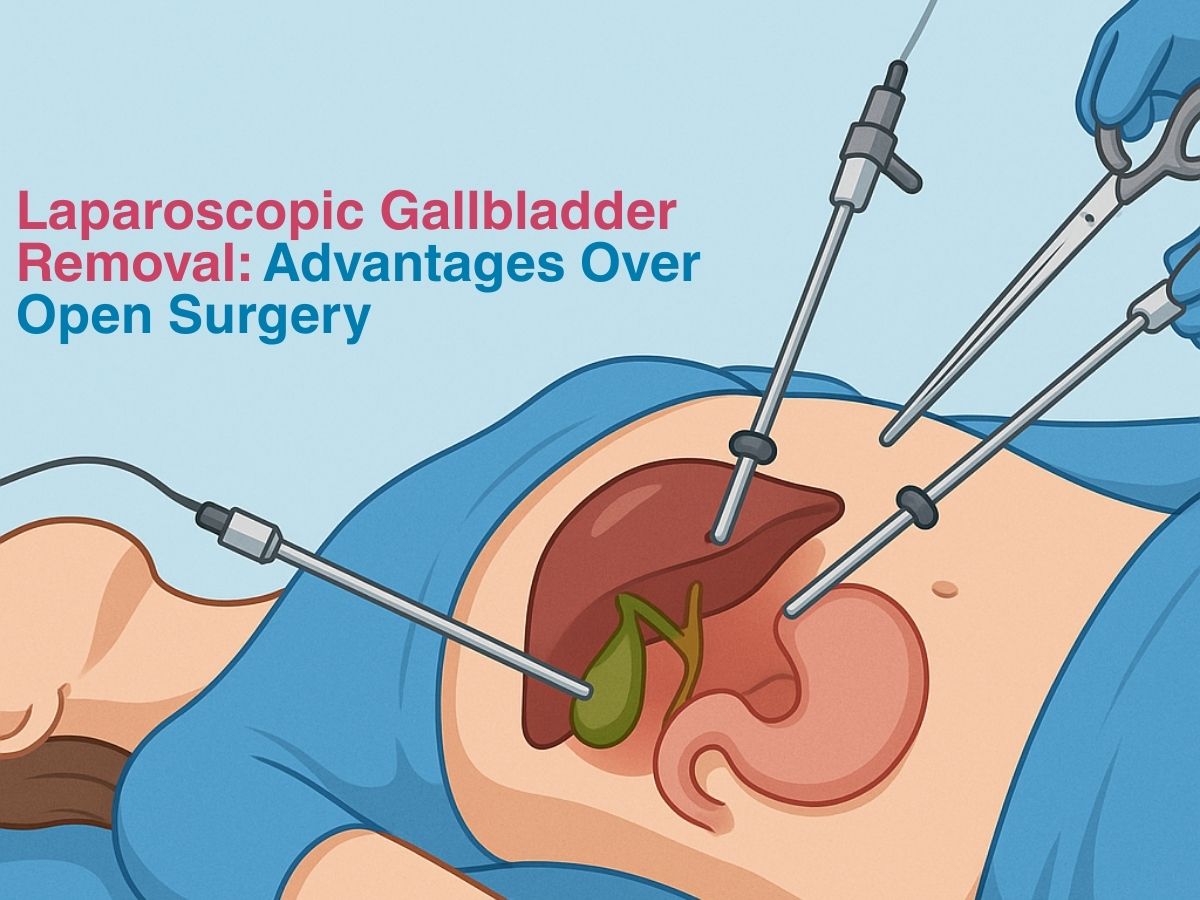
Laparoscopic Gallbladder Removal: Advantages Over Open Surgery

The gallbladder is a small, pear shaped organ in the abdomen and its main job is to store bile which is a fluid needed for digestion of fats. Bile is produced by the liver and hence, the ecosystem of the liver, pancreas, gallbladder and the stomach and intestines is closely connected with various ducts and tubes. The gallbladder normally works very quietly and efficiently, but when gallstones are present and there is associated inflammation in the surrounding tissues, surgical removal becomes necessary. This organ can be removed by traditional open surgery or by using a laparoscopic, minimally invasive approach.
How Does Laparoscopic Surgery Differ From Open Surgery?
In laparoscopic surgeries, also called keyhole surgeries, multiple incisions which are less than a centimetre wide are used. For gallbladder removal or cholecystectomy, 4 incisions are made. Through one incision, the laparoscope is inserted, which helps the surgeon visualise the abdomen and the organs in greater detail. Then, specialised instruments are used to remove the gallbladder. The surgical procedure takes place in about 2 hours or less time. With the smaller incision and lesser chance of bleeding, recovery is faster with better healing too. The surgery is obviously done with general anaesthesia.
Benefits Of Laparoscopic Gallbladder Surgery-
The 4 main benefits of going for a laparoscopic cholecystectomy include-
- Smaller incisions and hence less noticeable scars after healing
- Better and quicker recovery
- Lesser risk of infections or bleeding at the incision site
- Lesser pain which means pain management medications don’t need to be used for a long time.
Laparoscopic Surgery Complications And Side Effects-
Some unwanted complications that may arise in some patients include-
- Anaesthesia related issues or reactions
- Infection of the urinary tract
- Bile may leak into the body cavity
- Infection or inflammation of the abdomen
- Injury to the bile ducts, liver or intestine, as they are located in close proximity to the gallbladder
- Hernias may form
- Bleeding is a very real possibility
Conclusion
Laparoscopic cholecystectomy recovery time is about 6-8 weeks if it is open surgery but less than a month with laparoscopic removal. Since the gallbladder itself gets removed, the liver will now make bile and send it to the small intestine directly via the bile duct. Following a proper diet is important afterwards as many people react poorly to foods high in fat. Talk to your doctor about how soon you can get back to your routine activities. Pain or nausea is very common after getting anaesthetised or having a gas pumped into your abdomen, but you will feel better in a couple days or sooner. So, don’t worry too much.






